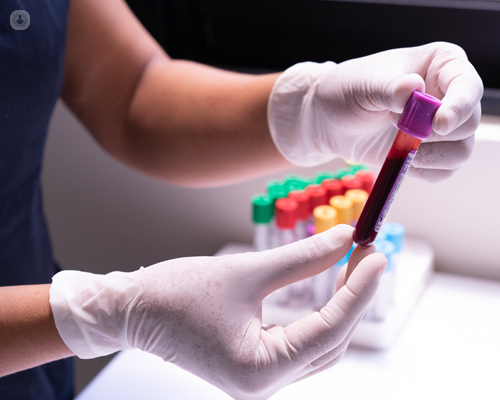Histamine
What is being analysed?
Histamine is a natural substance produced by the body's immune system, particularly in response to allergens or injury. The Histamine test measures the level of histamine in the blood.

What does the result signify?
The result of the Histamine test indicates the concentration of histamine in the bloodstream. Elevated levels may suggest an allergic reaction, histamine intolerance, or other immune system disorders.
Why conduct the analysis?
The analysis is performed to diagnose and monitor allergic conditions, such as allergic rhinitis, asthma, food allergies, and skin reactions. It helps healthcare providers identify the underlying cause of symptoms and develop appropriate treatment plans.
When to conduct the analysis?
The Histamine test may be requested when patients present with symptoms suggestive of allergic reactions, such as hives, itching, nasal congestion, wheezing, or gastrointestinal discomfort.
What sample is required?
A blood sample is required for the Histamine test, typically collected through venipuncture.
Is any prior preparation necessary?
No specific prior preparation is usually necessary for a Histamine test. However, patients should follow any instructions provided by their healthcare provider regarding fasting or medication restrictions, if applicable.
How is it used?
Histamine levels are used to assess the severity of allergic reactions and monitor the effectiveness of allergy treatments, such as antihistamine medications or immunotherapy.
What are the normal values?
Normal histamine levels vary depending on factors such as age, gender, and individual health status. Generally, histamine levels in the blood are low under normal conditions.
What does it mean to have altered values?
Elevated histamine levels may indicate an allergic reaction, histamine intolerance, or immune system dysfunction. Conversely, decreased histamine levels are less common but may suggest certain medical conditions or medication effects.
Histamine Values Table
| Histamine levels | Interpretation |
| Normal | Typically low under normal conditions |
| Elevated | Indicates possible allergic reaction or immune |